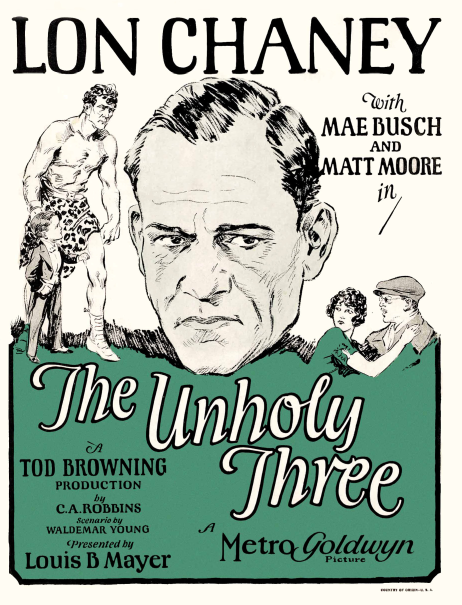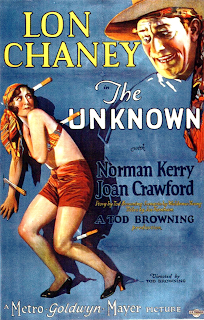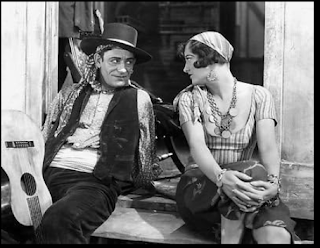(1929)
Directed by Albert S. Rogell
Written by Frances Hyland (story), Frederic and Fanny Hatton (dialogue)
Starring Joe E. Brown, Helen Foster, Barton Hepburn, Dorothy Gulliver, Lester Cole
IMDB Entry
Joe E. Brown was one of the biggest names of film comedy in the 1930s.* But his type of comedy went out of style and his films forgotten. Nowadays, the casual movie fan only knows him as Osgood Fielding in Some Like It Hot, speaking the classic line, "Nobody's perfect." I decided to check out what his films were like and picked Painted Faces, knowing nothing about it.
It is a real gem.
Buddy Barton (Barton Hepburn) and Babe Barnes (Dorothy Gulliver) are vaudeville partners, but Babe is harassed by Roderick (Lester Cole).** Buddy threatens to take care of him and -- you guessed it -- during a performance there is a shot and Roderick is dead, with Buddy holding a gun. He is quickly charged with murder, even though he insists he's innocent.***
After the trial, the jury retires to come to a verdict. Eleven of the jurors say guilty, but one -- Hermann (Joe E. Brown) -- keeps voting "not guilty." He refuses to change, saying only he thinks that Buddy is innocent and doesn't want him to go to the chair. Nothing can dissuade him. As the days drag on and Christmas approaches, Hermann finally explains. He was a circus clown, a father figure to Nancy (Helen Foster) and knew Roderick. There was a good reason why he knew Buddy wasn't the killer.
Brown is surprisingly good. Speaking with a comic accent,*** he seems somewhat simple, but he knows what's going on. His comedy in the movie is mostly physical and outside of the story -- he gives a demonstration of his circus act to the courtroom and it's shown in flashbacks.***** But he also manages some great pathos and drama throughout.
Lester Cole is a great cad. He had a short career, usually as a singer. But here he's despicable yet charming. Helen Foster is great as the naive young woman. Barton Hepburn and Dorothy Gulliver vanish from the movie once the scene shifts to the jury room.
Director Albert S. Rogell worked regularly, but didn't produce anything of note, other than the first movie version of L'il Abner, which flopped.
One interesting thing is that the songs are woven naturally into the plot. In a time when movies were "all singing, all dancing," there are no production numbers, but the handful of songs are all performed on stage or in contexts where people would naturally be singing. Another amusing theme is their visit to a Chinese restaurant, where Herman has no idea of what "chow mein" is.
The story seems to be hugely inspired by Vincent Starrett's story, "The Eleventh Juror," which came out two years before. Modern viewers would see parallels to Twelve Angry Men. Overall, the film is surprisingly good and touching, especially the ending.
__________________________________________________________________
*He was often caricatured in cartoons, a sure sign he was a household name of the time.
**Roderick is undeniably a sexual predator, showing that "me too" existed long before it became a movement.
***They vanish from the movie until the final scene.
****They call him "Dutch," but it doesn't sound like Dutch to me.
*****He was a circus acrobat before going into movies.





